Sometimes you just have to face your fears to see what’s on the other side.
I’ve always wanted to take the driver’s seat on a road trip in a foreign country since I’ve taken road trips with a car and driver in the past. This just seemed like the best way for me to explore, rather than only hitting the major tourist highlights on some organized tour. A car and driver through Tuscany would be outside of my budget.
It probably wasn’t the best place for my first international driving attempt since I don’t drive much at home in Toronto, and try to avoid it most of the time.
Italian drivers have a reputation for being aggressive speed demons. But I figured Tuscany might be a little easier because of the rural roads and the laid-back attitude. I was partly right.
Before the journey, I read as much as I could online. Some of it terrified me, but some provided good information for the road ahead.
The best information was a warning I received about Italy’s road signs - and I’m glad I investigated. I have never seen anything like it before. When I visited Italy previously, I guess I didn’t pay much attention since I wasn’t behind the wheel, but they were overwhelming.
The sheer volume - in any language - is enough to confuse any driver. Imagine speeding along at 110 kph (the highway speed limit) when suddenly there’s a grouping of road signs — like nine or ten — all bunched together. But don’t take your eyes off the road. The signs fly past before you can read them all.
Sorry, I don’t have any pictures to show you. I was too busy trying to read the signs and navigate past them to take any photos.
There are some very important ones that I don’t see at home. Like the warning about the ZTL — Zona Traffico Limitato. I was forewarned about these areas of towns and cities that are off limits to all but emergency/city vehicles and sometimes local residents. Cross into one and your license plate will be photographed and you will get a hefty fine. There are no excuses for tourists. I knew to avoid entering a ZTL at all costs. (Waze has come out with an app and APK has a ZTL Radar app to help avoid a hefty fine. Although slowing down and enjoying the scenery works too.)
Google Maps was my saviour, although it can’t always be trusted. It showed me how to get from point A to point B, on the quickest and easiest route, even if that meant directing us through a ZTL. Google doesn’t seem to recognize the restricted areas. Do not miss those signs.
My friend and I were on a two-day trip through Tuscany from Florence with stops in Siena, Pitigliano (overnight), Pisa, and back to Florence. It seemed doable, especially in October, when there would be a lot fewer tourists and drivers on the roads.
The drive wasn’t as bad as I expected. I remembered to keep on the right side of the road, in the slow lane, so I didn’t feel like I had to speed through the journey.
It probably prevented any damage to the rental car because the roads were in awful condition. On one regional highway, as I was racing along at 110 kph — 120 kph, suddenly the car dropped with a bang as we hit a large pothole. I was terrified we’d blow a tire.
When I was mapping out the trip, I learned the SR222 secondary road, was the most scenic route in Tuscany. And despite some bumps in the road, it lived up to its reputation.
Driving across the countryside on that freshly oiled blacktop was like the Tuscany I dreamed about. Vineyards, olive groves, and perfectly shaped Cypress trees. The road winds its way through towns where people are going about their daily business. We passed numerous Agriturismos (B&Bs at farms or vineyards) that I want to visit on my next Italian road trip.
Siena
This was my second visit to Siena, so I knew what to see and do before moving on. There wasn’t a lot of time to dawdle since we were on a tight travel schedule - this should have been a week, or at least four or five days.
We managed to find good parking just outside the wall surrounding the old part of the city (and just outside the ZTL) - the benefits of touring on a weekday in October. We wandered through the narrow cobblestone streets and ended up outside the magnificent medieval Duomo di Siena.
It is one of the most beautiful churches I’ve seen, anywhere in the world (and I have seen a lot of them). It was constructed in the 12th, 13th, and 14th centuries. The Gothic exterior only hints at the beauty inside. It was jaw-dropping when we stepped through the nave.
A spiritual feast for the eyes. The dark green and white striped marble pillars, the magnificent ceiling, the intricate mosaics on the floors, the chapels, each featuring individual artwork, with sculptures by Michelangelo and Donatello. The magnificent organ and pulpit.
The library contains massive medieval books and spectacular paintings with a sign telling visitors, “Please Do Not Stay.”
I still have never seen the Gate of Heaven display on the Cathedral roofs, but it’s supposed to be a spiritual experience.
Just down the hill is the Piazza Del Campo, where the annual Palio horse race is held every August. The piazza is massive and rivals any square in Italy. Numerous websites refer to it as Europe’s best example of a medieval square.
The piazza is scallop-shaped with its brick surface laid out in a chevron pattern. It’s rimmed with buildings used as apartments and hotels featuring restaurants and bars with the best viewing spots for the Palio.
At one end is the Palazzo Pubblico and the Torre del Mangia, with stairs to climb for spectacular views of Siena. Along the walls are metal rings where horses are tethered before the race. At the other end of the Campo is a magnificent marble fountain, Fonte Gaia, that was first constructed in 1342 and is now a favorite bathing spot for the town’s pigeon population.
Pitigliano
Our next stop was Pitigliano, which turned out to be the highlight of my trip to Italy. I just wish I had more time there. I guess another time.
Pitigliano isn’t really much of a tourist hotspot. It’s in the heart of Tuscany but away from any of the bigger cities. And if it wasn’t for Google Maps I never would have found it. I was even forewarned about the sharp hairpin turn as soon as we drove into the town.
Word to the wise: Take the left road instead of trying to drive into the town. There’s public parking on the road. It’s cheap - it cost us three euros for the night. The next morning, we discovered another free parking area just a block or two further up the road.
The narrow greenspace along the road gave us a spectacular view of the town.
There are only a couple of places to stay in Pitigliano. We found a small family-owned boutique hotel with just 5 rooms that was tastefully decorated, comfortable, and welcoming. The couple who own the 17th-century hotel also own two restaurants in the tiny village, where I had one of the best meals I have eaten in Italy.
There isn’t a lot to do in the town except explore the streets and alleyways and browse the shops. Only 300 people live in the old town, including the area that was once a Jewish ghetto.
We bought a ticket to explore, where each of the homes and buildings has its own cellar carved into the rock. Many are connected through subterranean tunnels. The underground museum highlights the history of the Jewish population in Pitigliano. Their numbers have dwindled over the decades, and when the Second World War broke out, their neighbors hid the remaining Jews from persecution and death. The subterranean warren of rooms is well equipped with an underground slaughterhouse and kitchen where food was prepared.
Pisa
What is there to say about Pisa that hasn’t been said before? We came. We drove around in circles trying to find parking. We wandered through the Piazza del Duomo, where the Leaning Tower of Pisa and the Cathedral are swarming with tourists. And we posed. Like tourists.
My friend hadn’t been there before, and when in Tuscany, you have to experience Pisa at least once. So we took it all in. It’s a beautiful city and a great place to stretch before the hour-and-a-half drive back to Florence.
By the time I handed over the keys and the car received a final inspection, I could finally breathe easy again, and my shoulders slouched forward as the stress of driving lifted.
You’d think I would stick to a car and driver from now on. But you’d be wrong.
My next road adventure was in the South of France. But that’s another story for another time.





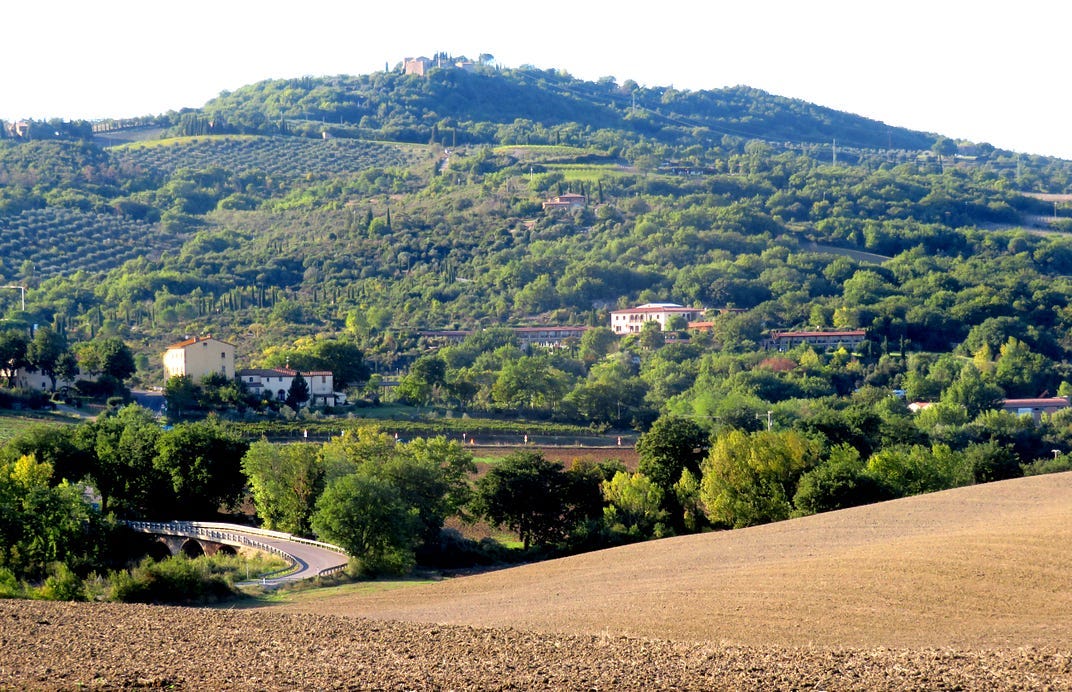

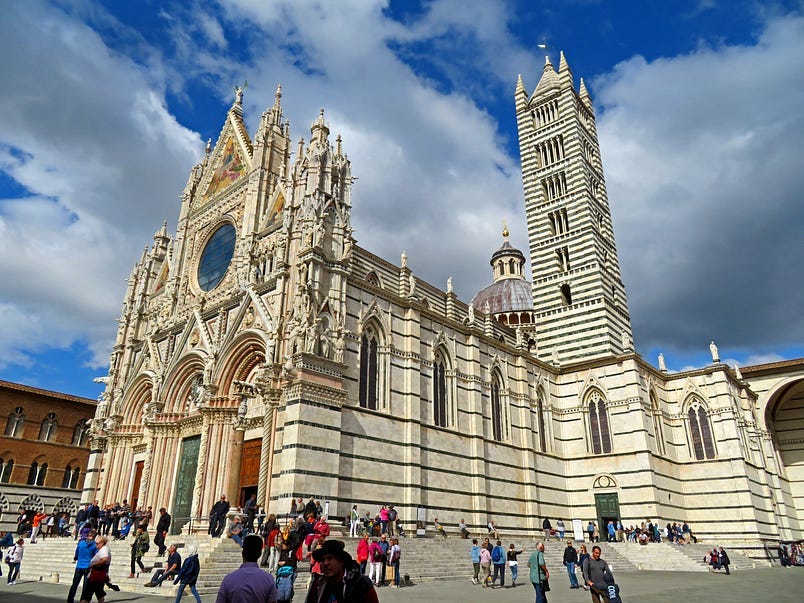
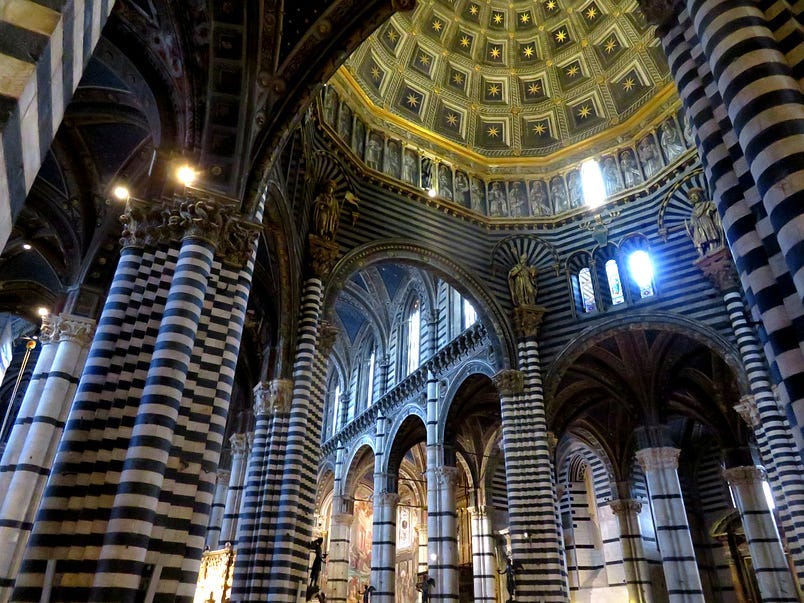
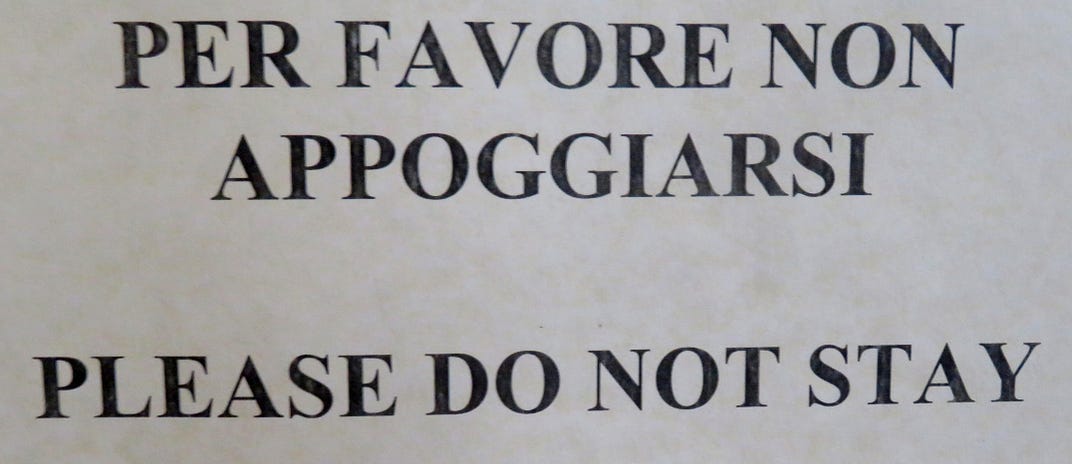


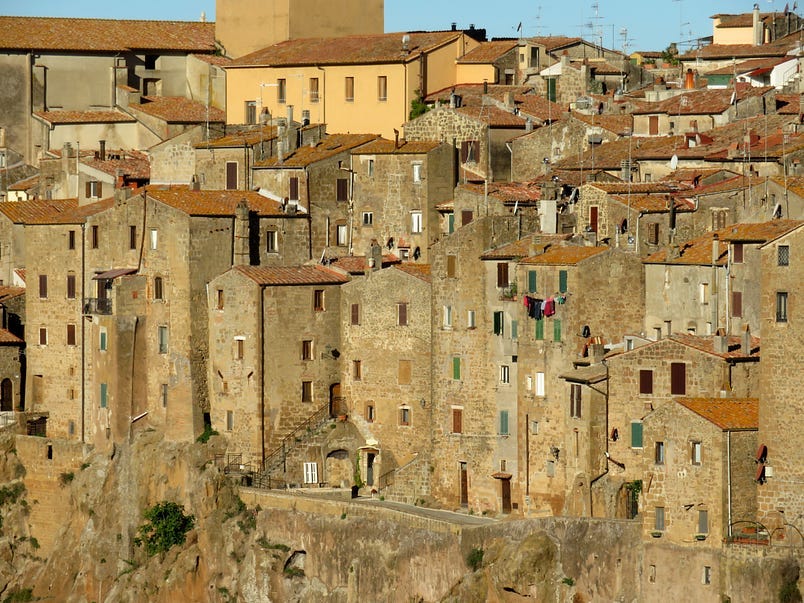

Loved reading about your trip to Siena where I was with my family a year ago. You were brave to drive. We had a driver take us from Florence into Tuscany with a stop in the Chianti region for lunch and wine tasting and loved the countryside as passengers. I would have caved under the pressure of figuring out all those road signs…good work!